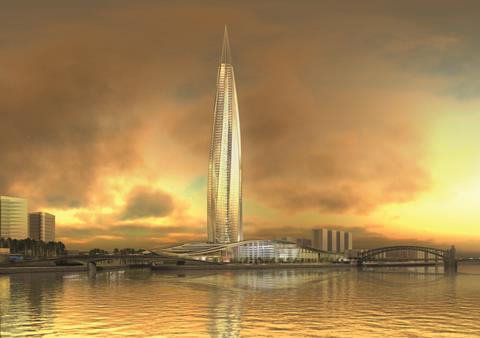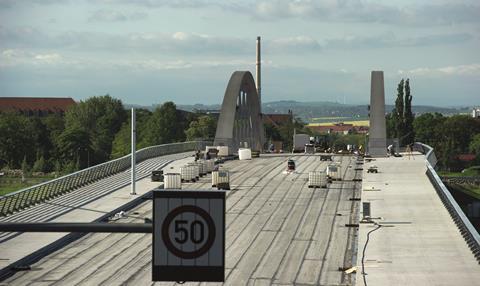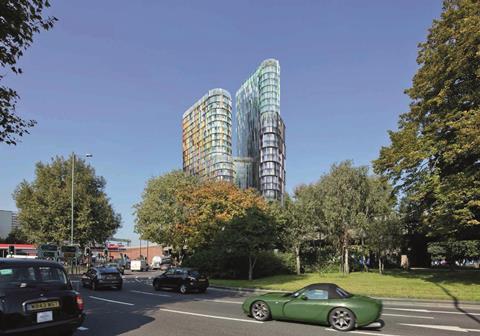After 30 years as a World Heritage Site, the Tower of London faces having its status withdrawn because of the skyscrapers looming over it. It‚Äôs not the only site recently threatened with delisting ‚Äď but is there any consistency in Unesco‚Äôs approach, and does freezing a city at a moment in history do it more harm than good?

Next month the 4th annual World Heritage UK conference will be held at the Tower of London. The date coincides with the 30th anniversary of the Tower of London‚Äôs elevation to World Heritage Site status, the coveted Unesco designation that recognises a landmark or location for its unique ‚Äúcultural, historic or scientific‚ÄĚ contribution to global civilisation.
The UK has 31 such sites and they include natural landscapes such as Giant’s Causeway and the Lake District as well as urban landmarks such as the city of Bath and Edinburgh Old and New Towns. London has four such sites, and globally the designation also includes iconic locations such as the Taj Mahal, the pyramids of Giza and the Grand Canyon.
But this autumn’s conference in London will seek to examine how the wider setting of UK Unesco World Heritage Sites can be enhanced and protected, and this touches on an incendiary issue that has caused growing concern among heritage lobbyists and others in recent years.
Aptly, the Tower of London itself remains a case in point. When it received its World Heritage Site inscription in 1988, the citation identified it as ‚Äúthe most complete example of an 11th century fortress palace remaining in Europe‚ÄĚ. While this accolade remains unchanged, in the intervening decades the setting of the Tower has been altered almost beyond recognition by a forest of City of London skyscrapers crowding the skyline behind the medieval fortress ‚Äď with more still to come.

This has led to concerns from Unesco that the Tower‚Äôs visual impact and historic setting are being eroded. From 2007 onwards successive visiting Unesco delegations have warned that the Tower of London could be placed on the organisation‚Äôs in-danger register due to the ‚Äúnegative‚ÄĚ impact of tall buildings such as the Shard and the Walkie Talkie. Just last year, concerns over plans for Make‚Äôs 1 Leadenhall skyscraper prompted Historic Royal Palaces, which manages the attraction, to warn that ‚Äúthe steady build-up in both density and height‚ÄĚ of the City‚Äôs tall buildings risked ‚Äúbecoming visually dominant in iconic views of the Tower‚ÄĚ and thereby putting its World Heritage status at risk.
Similar concerns have been raised at central London‚Äôs other World Heritage Site at Westminster. There too various developments in the surrounding districts of the South Bank, Waterloo, Vauxhall and Elephant and Castle have prompted Unesco to issue dire warnings about the Palace of Westminster and Westminster Abbey precinct also being placed on their in-danger register unless ‚Äúharmful‚ÄĚ development was curbed.
In 2013, Unesco wrote: ‚ÄúOver the last years, the world heritage committee has repeatedly expressed concern about the actual or potential adverse impact of tall buildings on the setting of the property [the area around parliament].‚ÄĚ
Arguably the situation is even worse in Liverpool. In 2004 a large swath of the docks and city centre was granted World Heritage Site status, but just eight years later it was placed on Unesco’s in-danger register because of concerns about inappropriate modern development. These are chiefly, though not exclusively, centred on Peel Group’s massive planned Liverpool Waters redevelopment, a hugely controversial £5.5bn proposal to erect, among other things, a wall of skyscrapers along the city’s iconic waterfront.
Initially Liverpool reacted bullishly, with combative mayor Joe Anderson brashly proclaiming that ‚Äúnot one person who comes to visit our city comes to see the Unesco certificate on my wall‚ÄĚ, an attitude that many assumed would lead to Unesco throwing Liverpool off its list at its Bahrain committee session earlier this summer. Although Liverpool was instead granted a stay of execution, the city remains firmly on the in-danger list.
Future Unesco versus developer flashpoints may also may also be brewing at London‚Äôs two other World Heritage Sites, Maritime Greenwich and Kew Gardens. Last month a public inquiry was held into Studio Egret West‚Äôs 32-storey Chiswick Curve tower. The tower had already been refused planning permission by the local authority in 2017, on the grounds that it would cause ‚Äúsubstantial harm to a range of designated heritage assets, including the Royal Botanic Kew Gardens World Heritage Site‚ÄĚ. Should the planning inquiry overturn the refusal, Unesco is unlikely to be happy.
And earlier this month Historic England savaged Allies and Morrison‚Äôs proposed skyscraper cluster at British Land‚Äôs ¬£4bn Canada Water regeneration scheme, claiming that it would ‚Äúadversely affect the setting of highly graded designated heritage assets‚ÄĚ, including the nearby Greenwich World Heritage Site.
Allies and Morrison is also potentially flirting with Unesco ire at the Bath World Heritage Site. Despite the practice‚Äôs mixed-use Bath Quay North scheme receiving outline planning permission a fortnight ago, it was slammed by the council planning officers ‚Äď who claimed that its ‚Äúresulting obstruction, bulk and height compete with, dominate and impact on the distinctive character of Georgian Bath and the wider World Heritage Site‚ÄĚ.

Height versus heritage?
So does this growing number of clashes and potential points of contention between Unesco and new schemes mean that World Heritage Site protection is simply becoming incompatible with the development and regeneration needs of modern cities? Is Peel Group former development director Lindsey Ashworth right when he says that ‚ÄúUnesco status is a badge on the wall but we cannot afford to fossilise our city‚ÄĚ?
Absolutely not, according to Rosemarie MacQueen, former strategic director of the built environment at Westminster city council, who has almost 40 years of experience in planning and conservation in the borough and is now a commissioner for Historic England.
‚ÄúThe terms ‚Äėfossilised‚Äô and ‚Äėpreserve in aspic‚Äô actually amuse me. Aspic is a jelly that doesn‚Äôt have a solid state; it grows and mutates in exactly the same way that urban development does. Seventy-eight percent of Westminster is covered by conservation areas and it has more listed buildings than any other borough in the UK. Yet it receives over 13,000 planning applications every year, and the vast majority of those are successful. How on earth can that be fossilised?‚ÄĚ
For MacQueen, World Heritage Sites are certainly not about prohibiting modern architecture. ‚ÄúNew and old coexisting does not have to be problematic. There is already a wealth of sophisticated policy that can promote new and old in a sensitive and dynamic way. Flexibility in use class orders can also be a hugely influential legislative tool to modernise and adapt existing heritage assets.‚ÄĚ
Might it then be a case of it being easier to ensure protection in rural rather than urban contexts? Not necessarily, argues MacQueen. ‚ÄúStonehenge is having its own problems, with Unesco and Historic England being at opposite ends of the argument over the new underpass, and there are many cities ‚Äď such as Edinburgh and, to some extent, Bath ‚Äď that seem to have more effective management plans that protect heritage yet foster development.‚ÄĚ
So why, then, the undeniable increase in friction in London between heritage and development in recent years? For MacQueen there is one significant reason: property values. ‚ÄúWestminster was once an exemplar when it came to conservation, but at some point there was a definite sociological shift. It probably happened when the property market began to attract significant amounts of foreign investment and investors began to realise that the London market was able to offer them astronomical rates of return.‚ÄĚ
The most obvious built environment symbol of the pressure to capitalise on these high rates of return is the tall building. It is this building type, more than any other, that has inflamed heritage concerns at World Heritage Sites in both London and Liverpool over the past decade. Back in 2013, Unesco acknowledged this trend around Westminster and called for action to ‚Äústrengthen the systems for protecting the immediate and wider setting of the [World Heritage Site] property, which does not have a buffer zone.‚ÄĚ
The government resisted, in a move that MacQueen cites as one of the chief sources of current friction. ‚ÄúA buffer zone with clear criteria about maximum heights would save an awful lot of trouble ‚Äď as would a strong management plan. The latest London Plan says more about protection to World Heritage Sites but it‚Äôs still too fluffy and vague, allowing for multiple opposing interpretations that leave the door wide open to inappropriate development.‚ÄĚ
The Russian connection
But one of the biggest World Heritage Site flashpoints in recent years did not happen in Westminster, Liverpool or the City but 3,000 miles away in St Petersburg. Ironically St Petersburg’s modern skyline of domes and spires was inspired by London’s own largely vanished 17th-century equivalent.
But in 2005, energy giant Gazprom stunned conservationists and smashed a host of local planning policies protecting this skyline by proposing a 403m-high RMJM-designed skyscraper right in the heart of St Petersburg’s World Heritage Site. Pandemonium ensued, with protestors mounting legal challenges, planning meetings descending into riot and the Russian Union of Architects boycotting the competition from which the proposals sprang.
But arguably the most stinging sanction was Unesco‚Äôs threat to strip St Petersburg of its World Heritage Site status if the project went ahead. In this rare instance the threat actually worked, with a court ruling in 2010 that the existing height limit in the city centre could not be violated. The tower was subsequently moved to a new and less historically sensitive site on the outskirts of the city ‚Äď with another 60m defiantly added to its height for good measure. The tower opens as the Lakhta Centre this autumn, overtaking the Shard as Europe‚Äôs tallest skyscraper.

The Gazprom Tower incident shed an interesting perspective on the extent to which Unesco involvement influences development in World Heritage Sites. Is Unesco providing an essential public service that protects important cultural sites from the insensitivities of planning authorities and profiteering developers? Or is Unesco ‚Äď essentially an unelected technocracy ‚Äď overstepping its remit by interfering in local and central government‚Äôs legitimate democratic mandate to decide what does and doesn‚Äôt get built?
For Philipp Nikandrov, chief architect of Moscow-based Gorproject ‚Äď which took over the Gazprom designs from RMJM ‚Äď Unesco‚Äôs influence veers towards the latter. He further claims that the body‚Äôs policies for the management and protection of its World Heritage Sites is based on a series of fundamental theoretical misunderstandings.
‚ÄúUnesco‚Äôs practice of ‚Äėblacklisting‚Äô cities is wrong. If designed delicately and contextually, tall buildings can become iconic landmarks with historic backgrounds. Instead Unesco targets new developments to freeze historic cityscapes in and around World Heritage Sites. This stops creating a new architectural history and treats the city as a museum rather than a living entity. If we can further add observation decks to the top of tall buildings then this provides the opportunity to enjoy aerial views of historic ensembles, which adds great value to World Heritage Sites.‚ÄĚ
Nikandrov still insists that the design of the original tower would have been sympathetic to the historic surroundings of its original location. ‚ÄúThe winning RMJM design was extremely contextual, being shaped as a transitional form between the dome and spire, the two dominant historic vertical forms in St Petersburg. This would not have damaged the historic city or its skyline as its visual impact would have been less than that of the Shard in London.‚ÄĚ
In terms of Unesco’s specific influence on the Gazprom project, Nikandrov believes that the furore was politically rather than architecturally motivated and that it exposed a host of policy inconsistencies in how Unesco manages and determines World Heritage Sites.
“St Petersburg has the largest World Heritage Site in the world, which protects 70km of the River Neva embankment. This is much bigger than that of Rome, Paris, London or Venice. Yet only 5% of this huge expanse houses historic buildings and 95% is agricultural and industrial land. It’s an unfairly inflated World Heritage Site and it requires urgent reconsideration.
‚ÄúEqually, Dresden was delisted as a World Heritage Site because it built a low, four-lane bridge a mile from its historic centre. Yet over the past 15 years St Petersburg has built three huge suspension bridges within the World Heritage Site with steel supports that exceed the 122m spire of the historic St Peter and Paul cathedral. But since these projects didn‚Äôt attract objections from conservationists, Unesco never even bothered to take notice.‚ÄĚ

The Dresden precedent
So, what happens when Unesco does take notice? Well, on recent evidence there are possible outcomes, which can neatly be summed up as the London, Liverpool or Dresden scenarios. The London scenario largely amounts to ignoring Unesco’s threats and launching a government charm offensive in order to diffuse the risk of delisting, a policy that appears hitherto to have been successful in thwarting World Heritage expulsion for Westminster and the Tower of London, much to the chagrin of conservationists.
The Liverpool scenario involves appearing initially defiant but then making discreet concessions that keep Unesco happy for the time being. In order to avoid being delisted this summer, Liverpool council proposed a range of measures including a new skyline policy, height restrictions and an independent advisory taskforce on heritage. Unesco contentment is presumably assured by Peel Group‚Äôs subsequent admission that the changes mean there is now ‚Äúno likelihood‚ÄĚ of its Liverpool Waters scheme proceeding as originally planned.
The nuclear option is the Dresden scenario. This is where Unesco actually follows up on its threats for once and delists a World Heritage Site. To date only two sites have ever been delisted: the Arabian Oryx Sanctuary in Oman where, poachers helped deplete a natural habitat, and the city of Dresden.
Like Liverpool, Dresden was listed in 2004 in recognition of its incomparable, if largely reconstructed, baroque architecture. But Unesco considered the construction of the Waldschlösschen bridge so grave a desecration of the city’s historic character that the city was formally delisted on 25 June 2009, incidentally the same day that Michael Jackson died.
The move surprised many, particularly in light of the multiple violations that Unesco continues to tolerate in London and Liverpool. But it does provide a rare opportunity to assess the material value of World Heritage Site status. If the Unesco inscription is such a coveted asset, then what happens when it is removed?

According to the chair of the Dresden Tourism Association, Johannes Lohmeyer, not much.‚ÄúThere were huge fears about a negative impact when we were delisted in 2009, and we were all disappointed by the decision. But what has happened since we were removed? Simply nothing. With the exception of small dip in 2015/16 there has been an average increase in the city‚Äôs tourism profits of 2.5% every year since 2009. I am convinced that the removal of our World Heritage status has had absolutely no impact on tourism.‚ÄĚ
Nikandrov agrees: ‚ÄúThe World Heritage Site is just a status title; Unesco does not provide any finance associated with the status and it‚Äôs entirely the obligation of the participating country to protect the site.‚ÄĚ
But MacQueen takes a more positive view. ‚ÄúThere‚Äôs a definite value. If I‚Äôm visiting somewhere for the very first time and I buy a guidebook to plan my schedule, I‚Äôll prioritise the locations that are World Heritage Sites. Something like 85% of first-time visitors to the UK visit the Westminster World Heritage Site. There is validated academic research that proves they offer real tourist and economic value.‚ÄĚ
Would tourists still visit Big Ben if it wasn’t a World Heritage Site? It is utterly inconceivable that they wouldn’t. But while economic benefit is tangible and probably isn’t determined by Unesco inscription, prestige and reputation are more indeterminate qualities and these are undoubtedly bestowed by World Heritage status.
As Liverpool mayor Joe Anderson succinctly puts it, it is ‚Äúa delicate task‚ÄĚ to ‚Äúbalance the needs of a growing city whilst protecting our World Heritage status‚ÄĚ. This invariably is the challenge for all cities in the 21st century, seeking to embed new architecture into old heritage.
And in doing so, one can‚Äôt help but be seduced by MacQueen‚Äôs analysis of how old and new can successfully coexist. ‚ÄúIt‚Äôs not about autocratic restrictions on new architecture, what‚Äôs important is analysing and understanding what makes an area special.‚ÄĚ As ever with urbanism, understanding is the key. But until planners, architects and developers enshrine this understanding in policy and design, World Heritage Sites will continue to be the celebrity battleground for a wider civic conflict between commerce and conservation.




























No comments yet